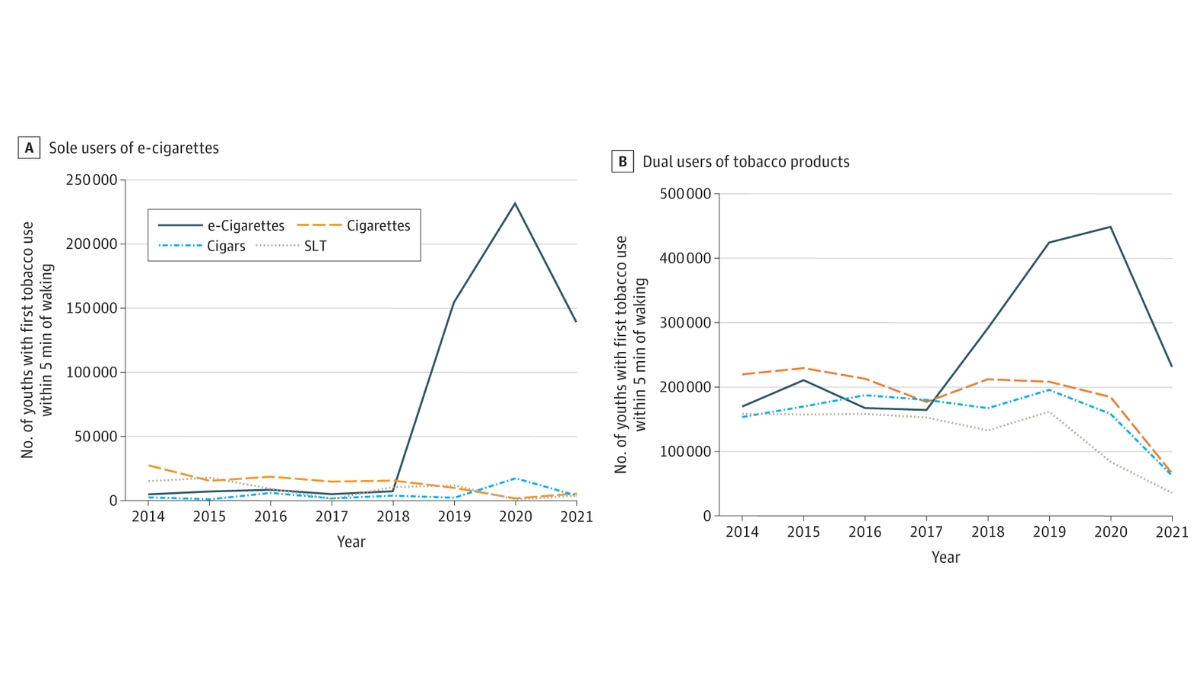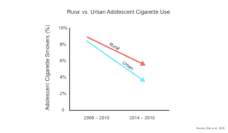Electronic cigarettes first gained attention among cigarette-users looking to quit smoking. They contain nicotine (the highly addictive chemical in traditional tobacco products) and toxins, such as carbonyl compounds, heavy metals, and volatile organic compounds, which injure the lungs.
But they contain lower levels of toxins than traditional cigarettes. As a result, experts consider e-cigarettes a safer option and a viable tool for smoking cessation.
However, newer models provide higher concentrations of nicotine in the form of salt with benzoic acid, which makes inhalation less harsh for new smokers. Coupling that with “flavors,” such as fruit and mint, e-cigarettes have become popular among youth.
Given nicotine’s potential to alter reward systems in the brain, federal and state governments are concerned about use in adolescents while their brains are still developing.
Stanton Glantz and colleagues analyzed data from the National Youth Tobacco Surveys to compare trends in adolescent use of e-cigarettes with cigarettes and other tobacco products. They assessed nicotine dependence as the time it took from waking to use a product.
They found that 78.3% of adolescents surveyed reported using e-cigarettes as their “first tobacco product” in 2019 (up from 27.2% in 2014). The above graphs map the number of adolescents from 2014-2021 with high levels of dependence, measured as use within 5 minutes of waking.
In Graph A, adolescents who solely used e-cigarettes were more likely to have high dependence compared to adolescents who solely used other products. Graph B demonstrates that, even among those who used multiple products, e-cigarettes were associated with higher dependence.
Glantz and colleagues note that this shift in e-cigarette use signals a need for clinicians to discuss dependence with adolescent patients. So far, banning certain flavors has had limited success decreasing overall usage, suggesting that new strategies such as lowering nicotine content and addressing underlying causes of substance use could be effective in reducing youth smoking.
Databyte via Stanton Glantz, Abra Jeffers, Jonathan P. Winickoff. Nicotine addiction and intensity of e-cigarette use by adolescents in the US, 2014 to 2021. JAMA Network Open, 2022.














